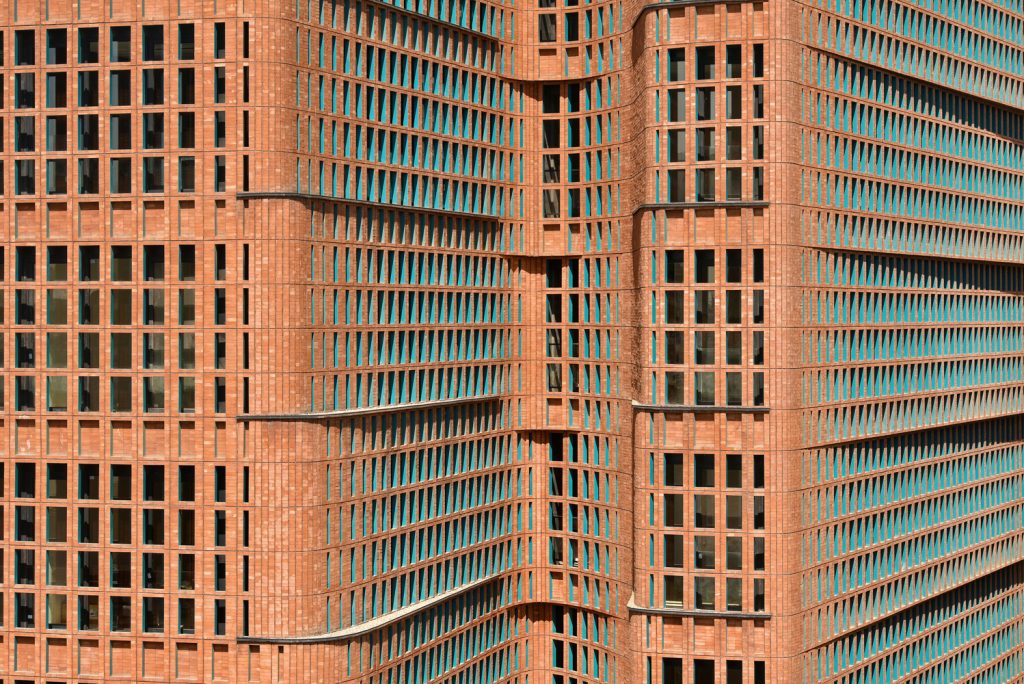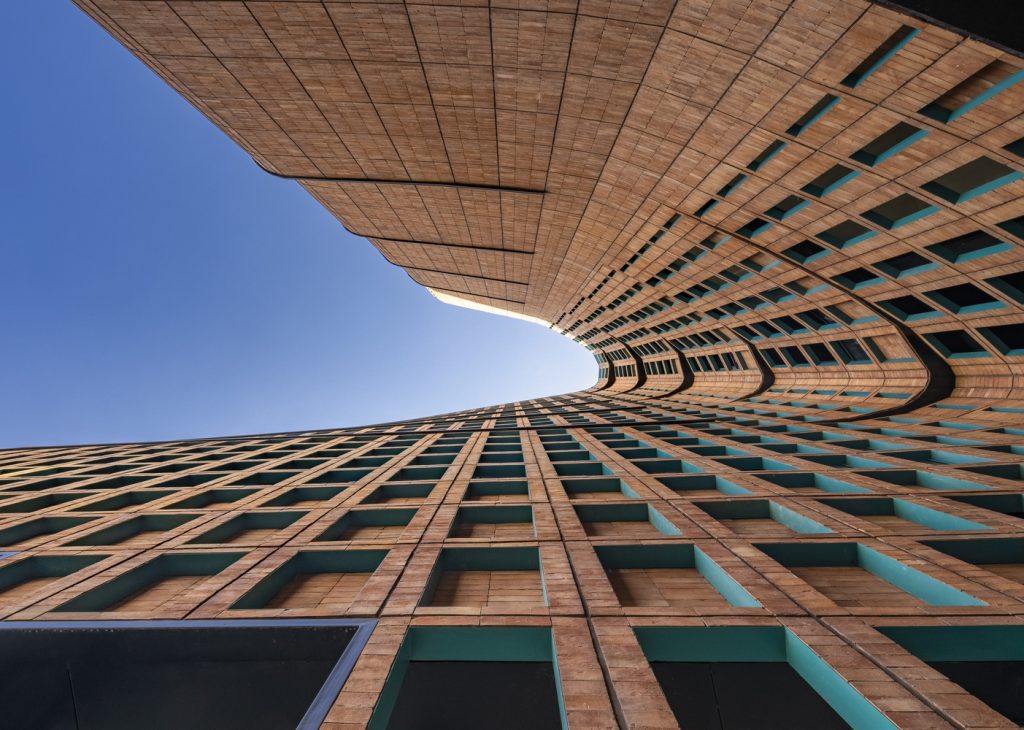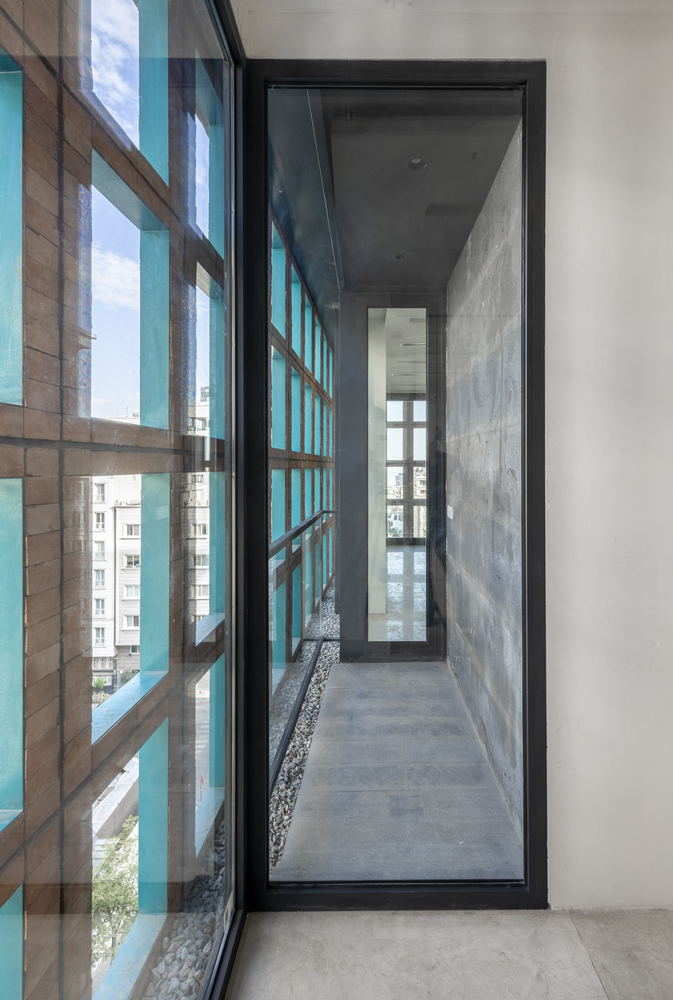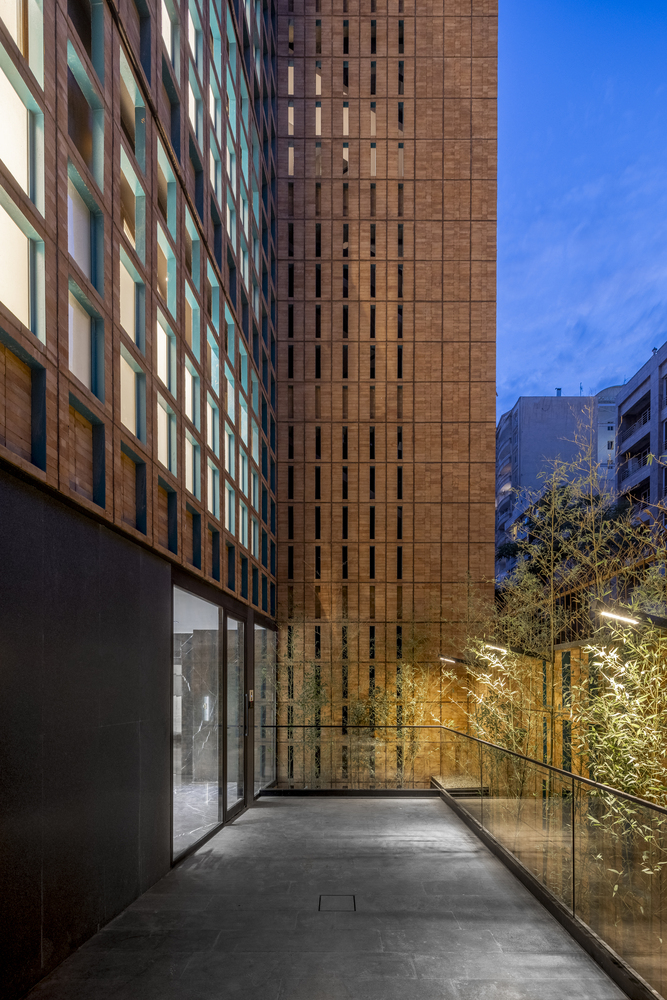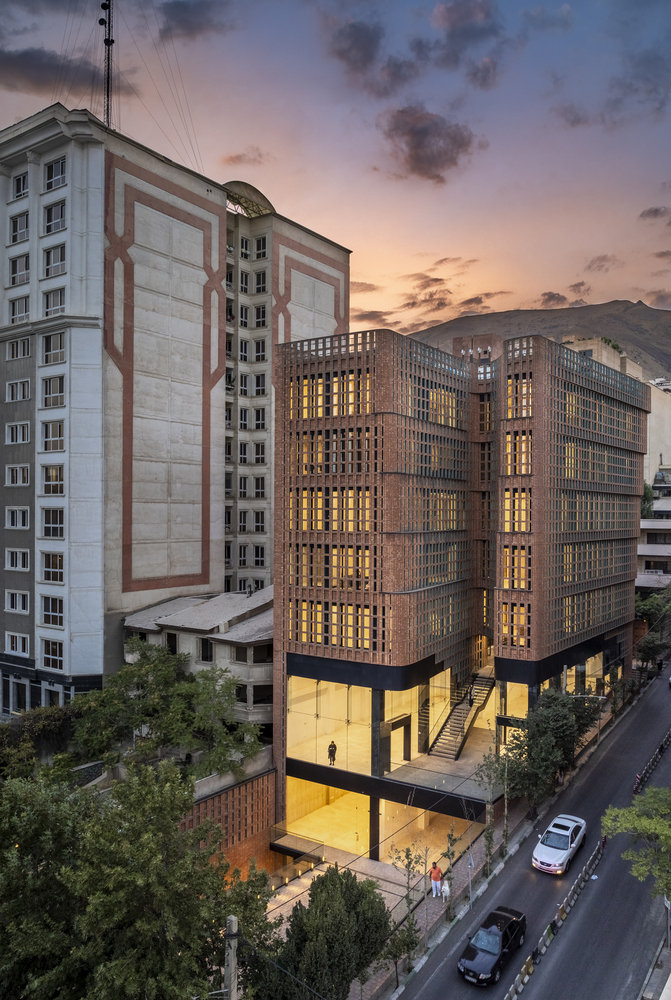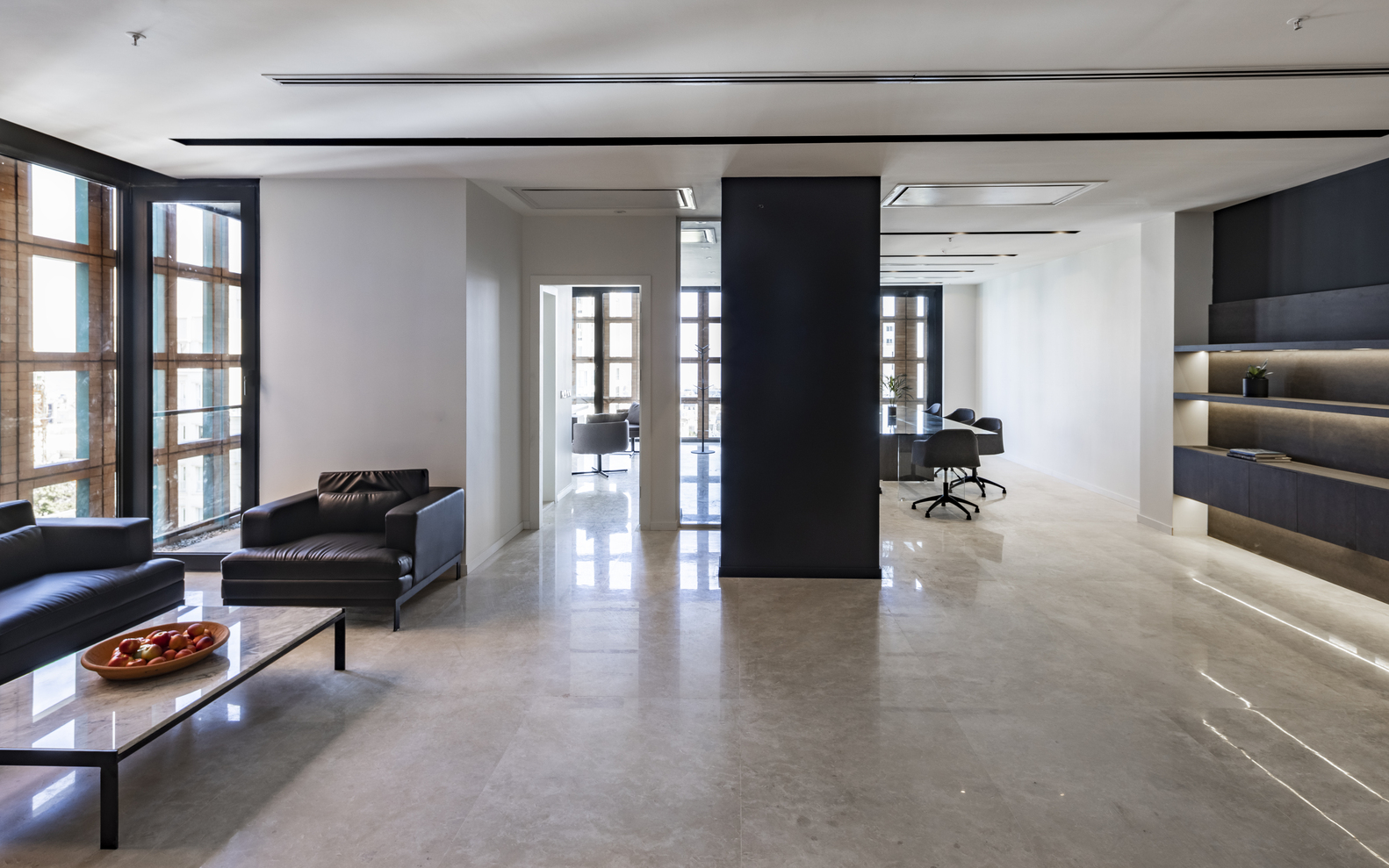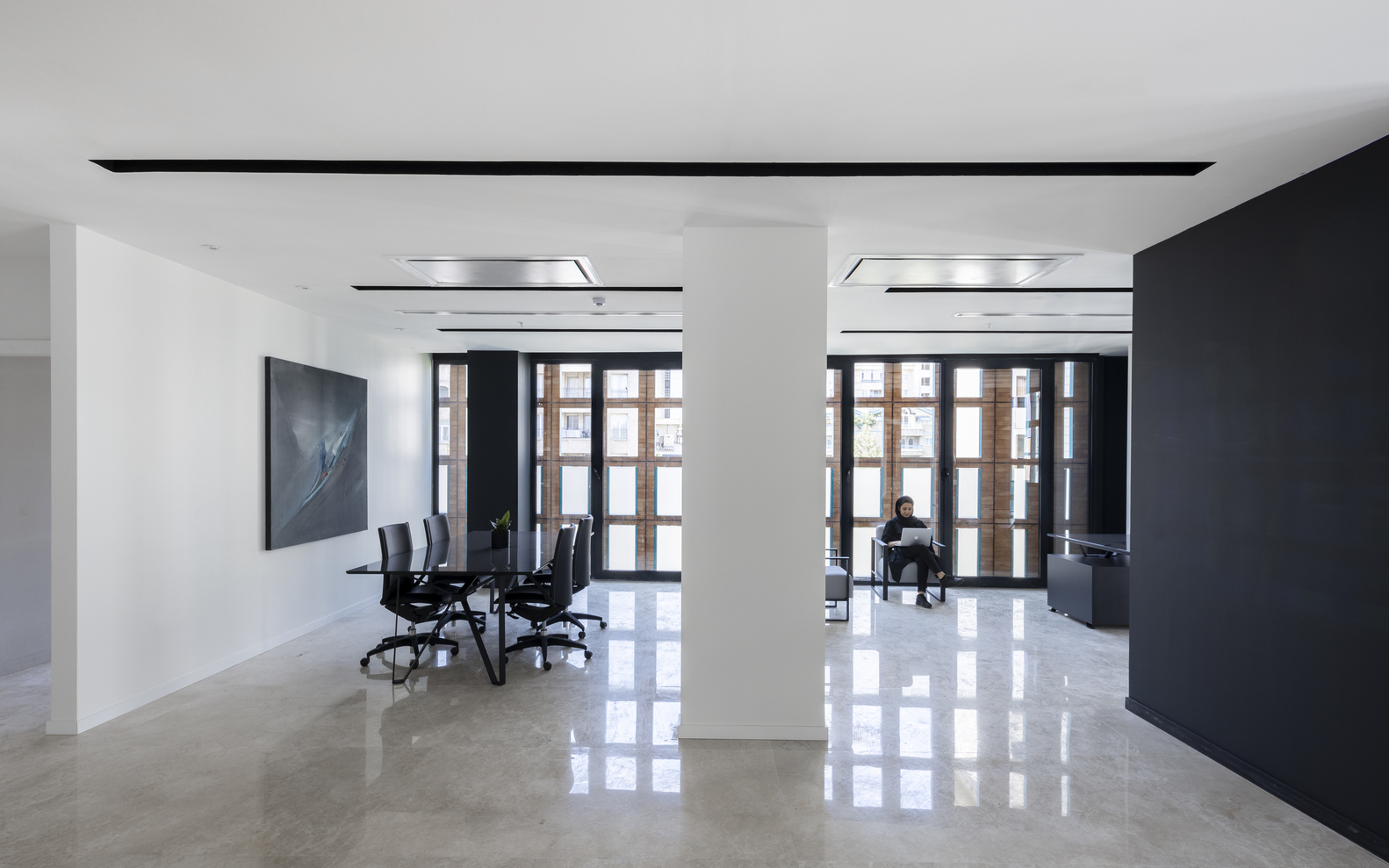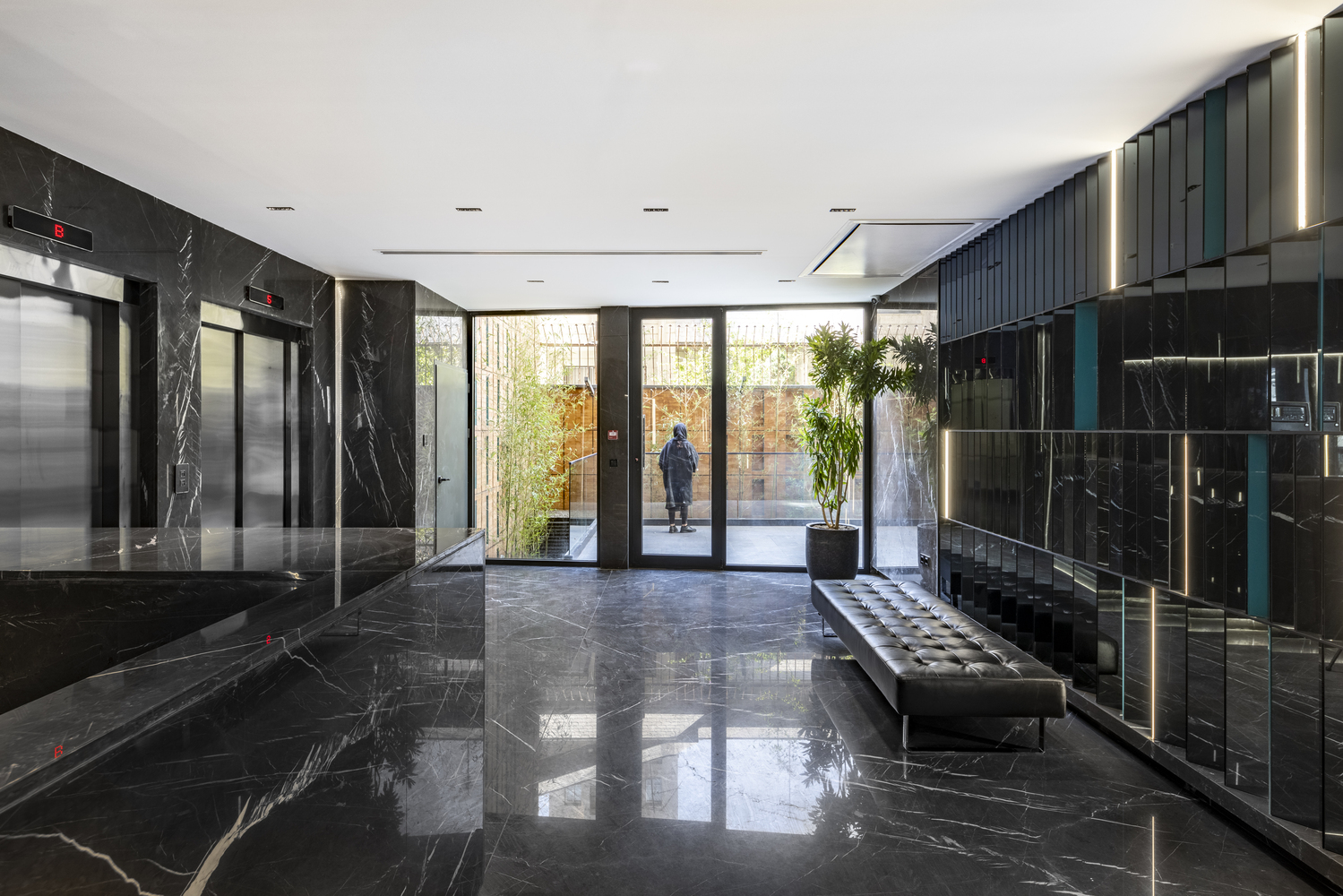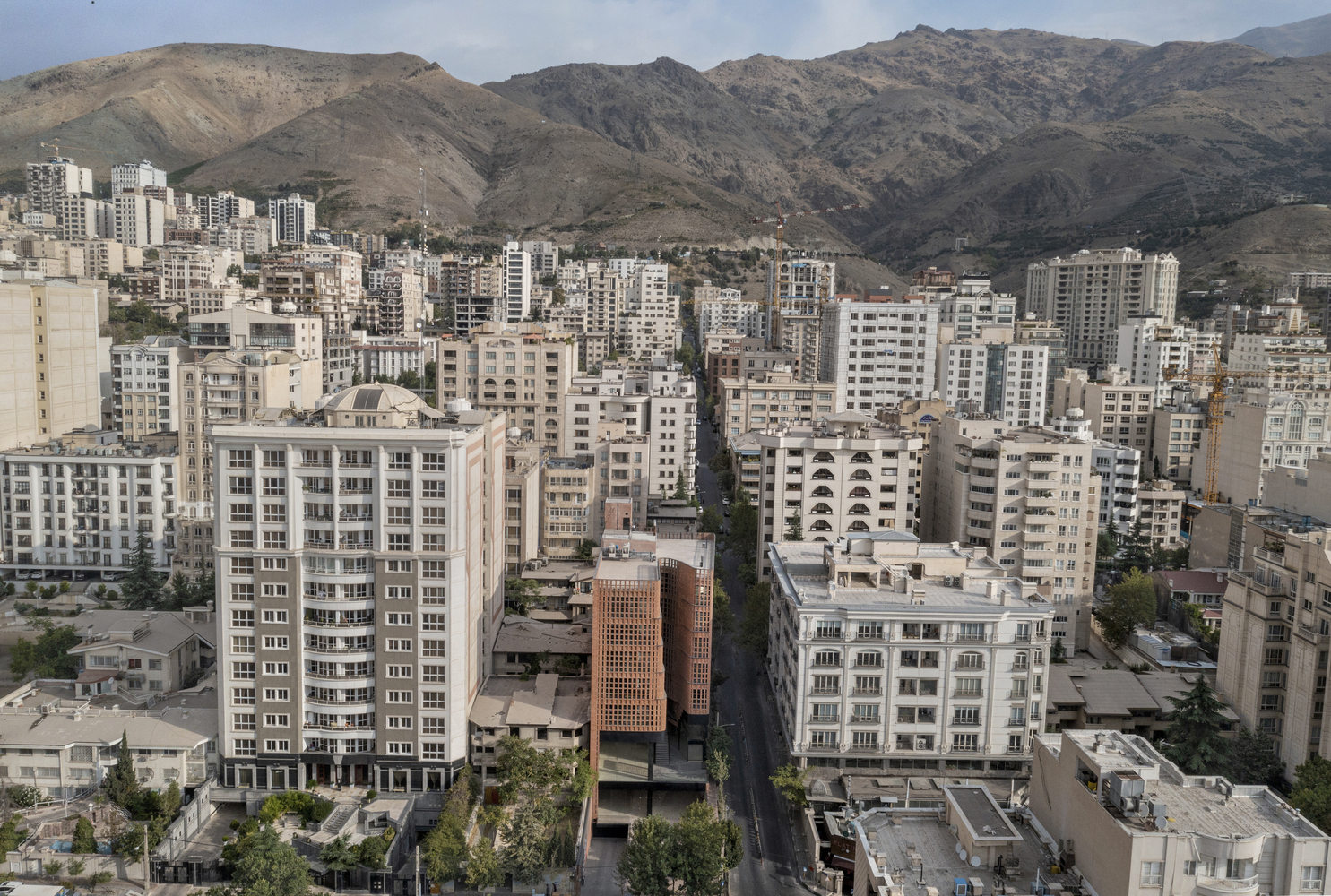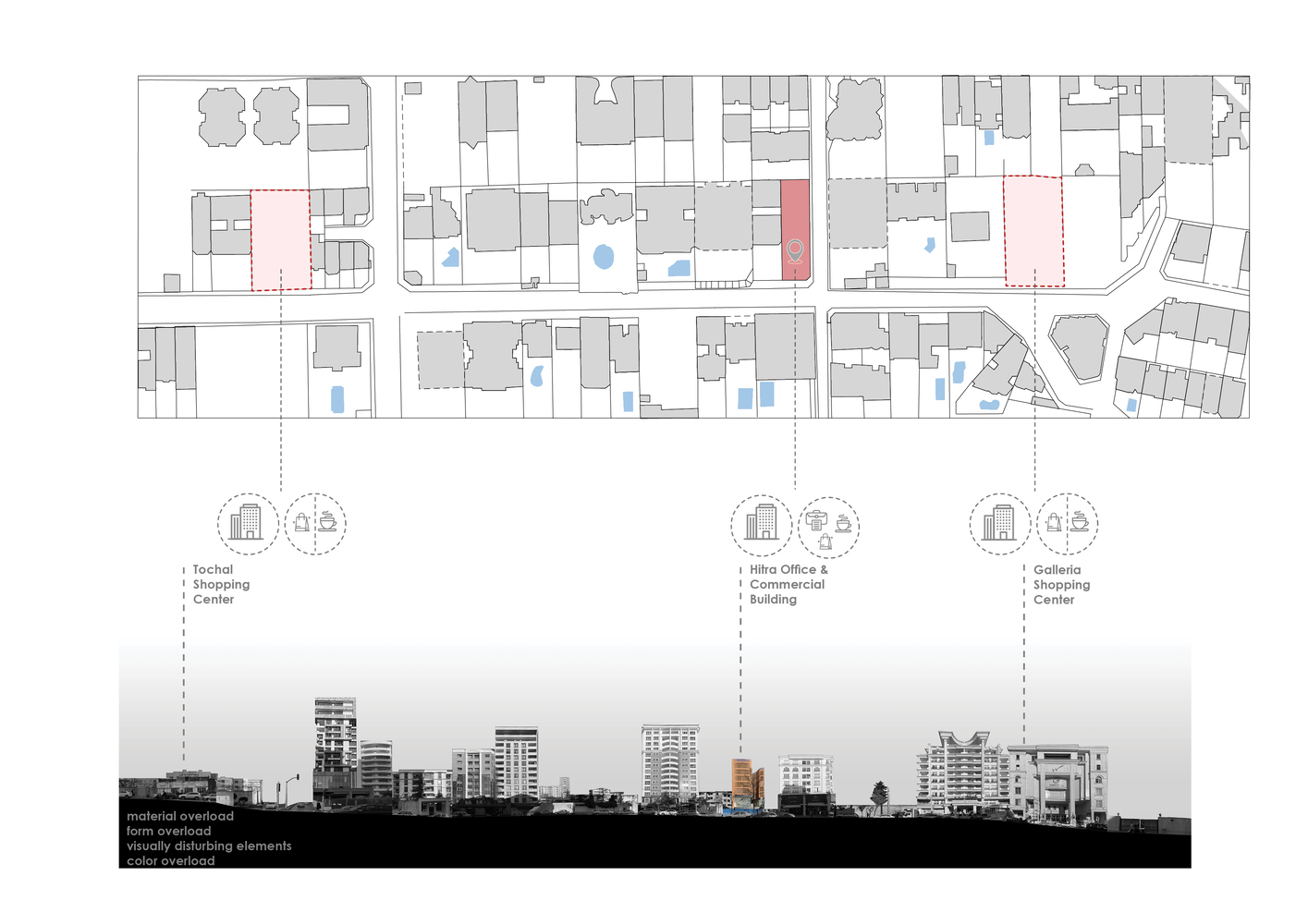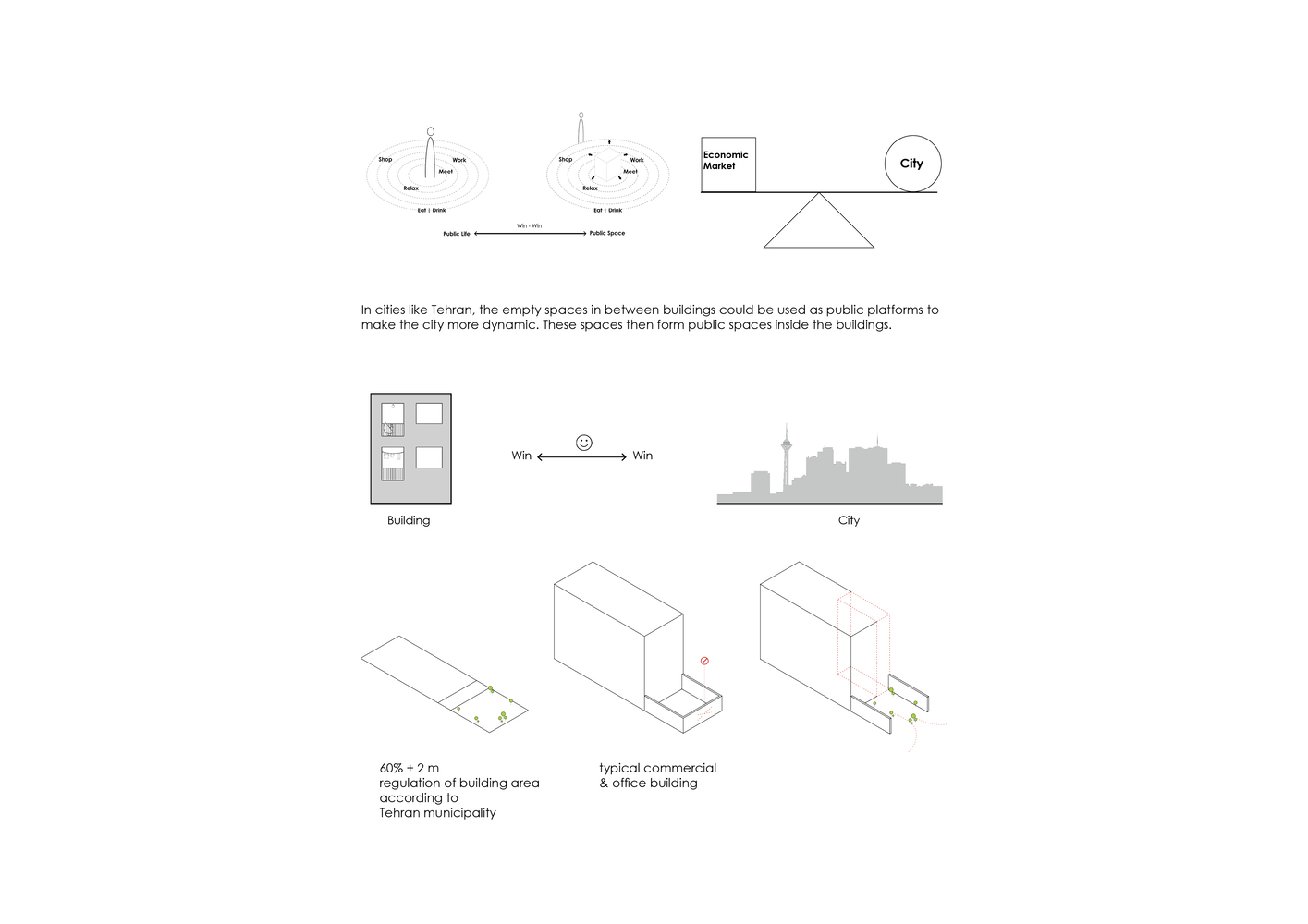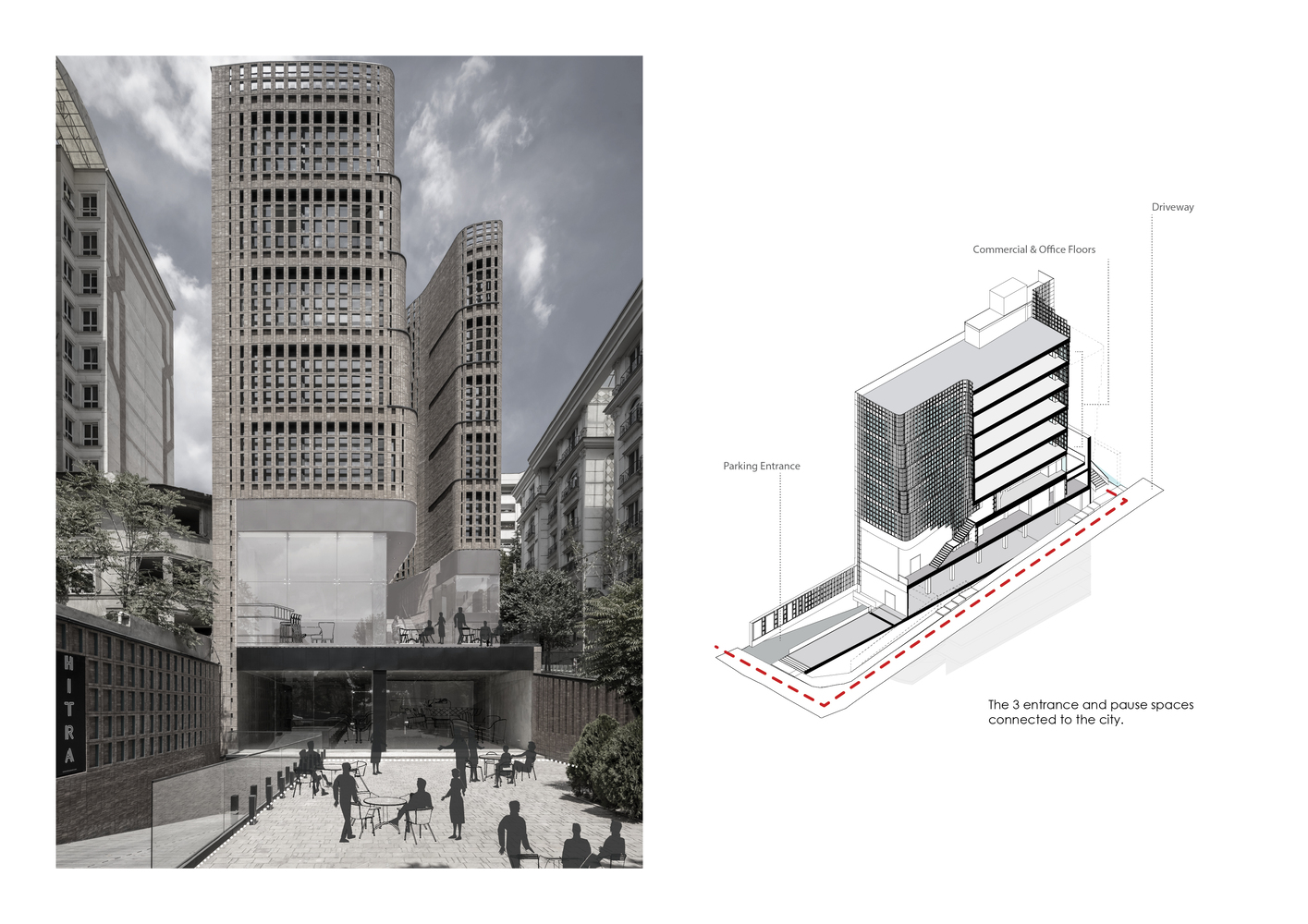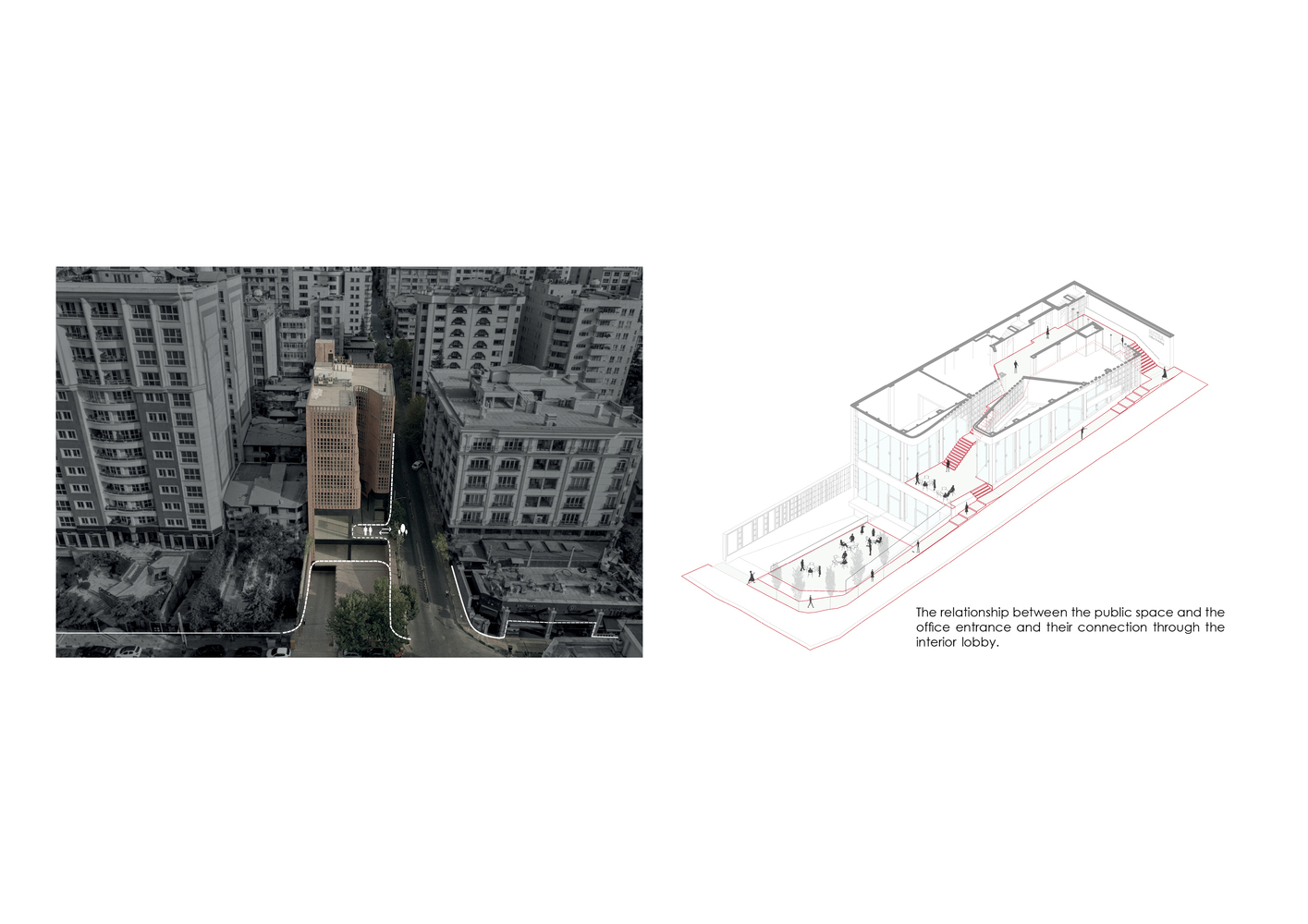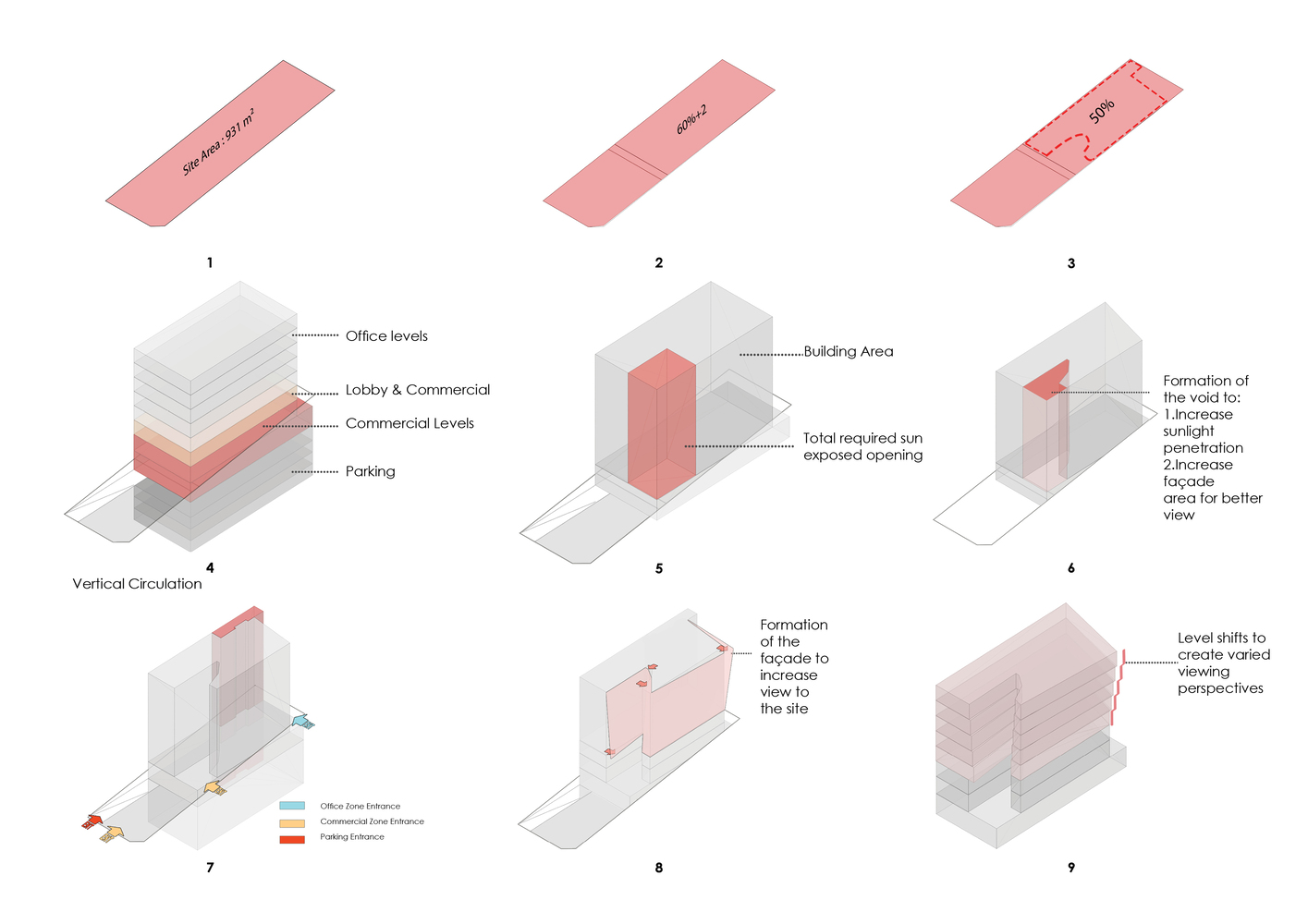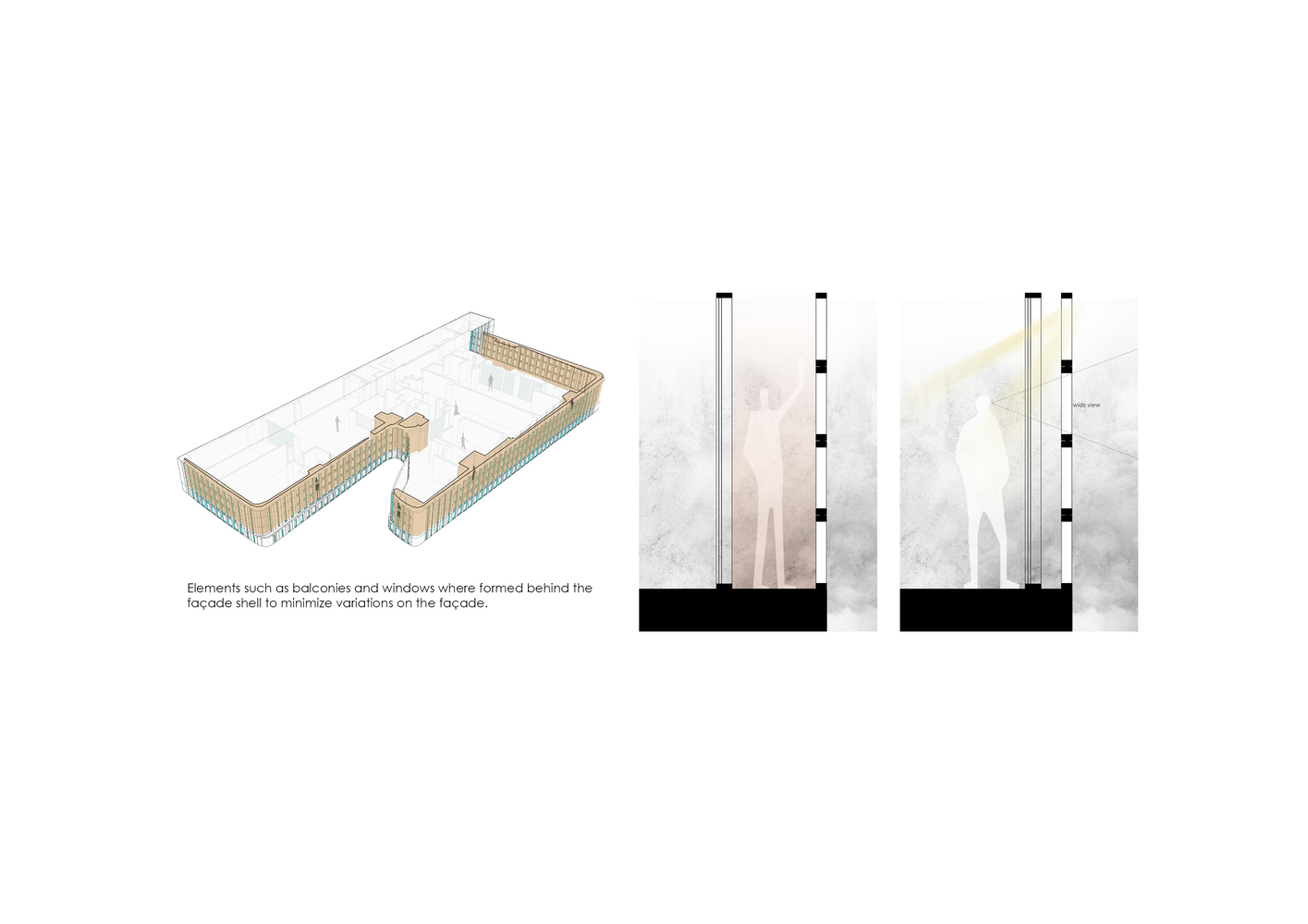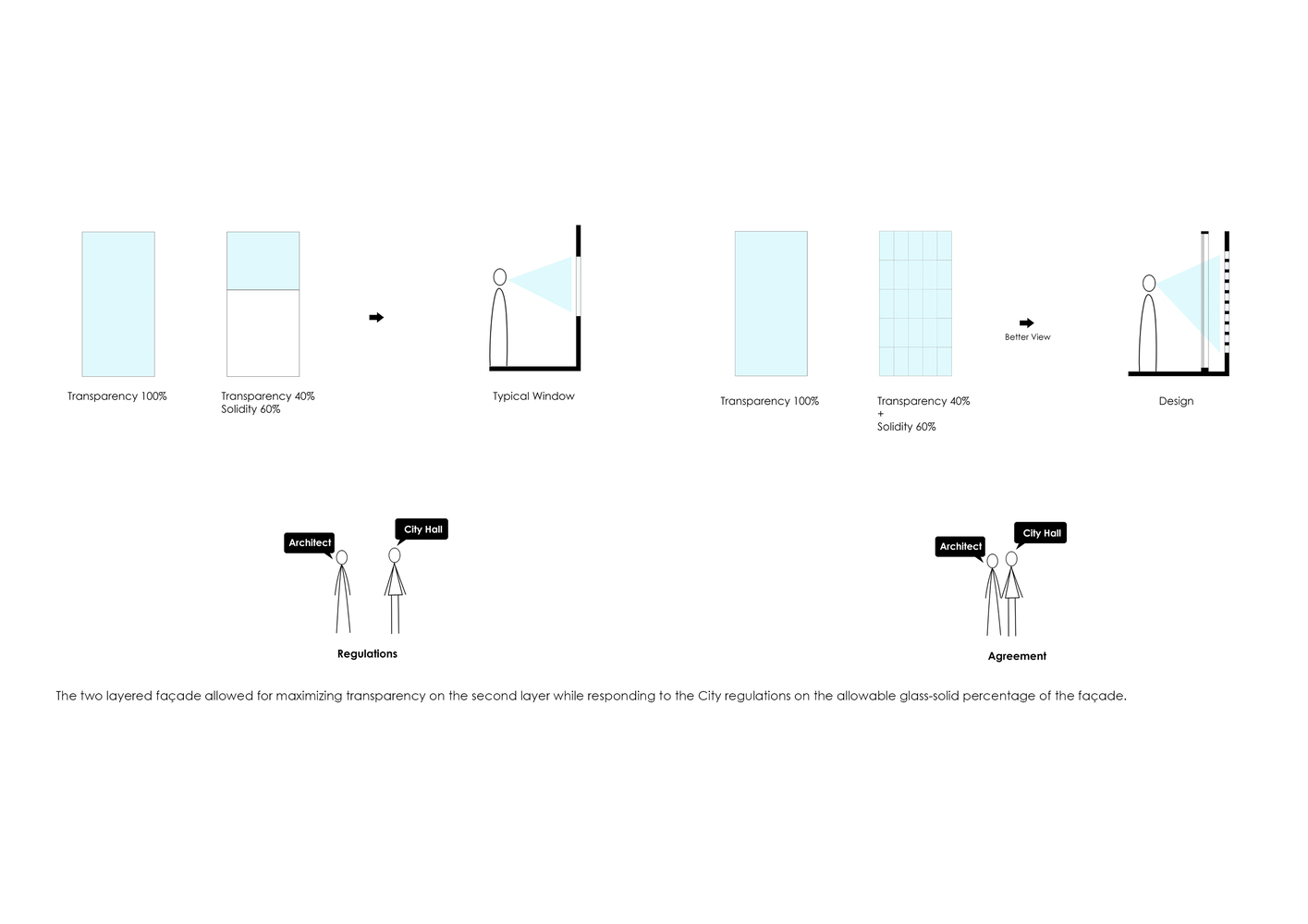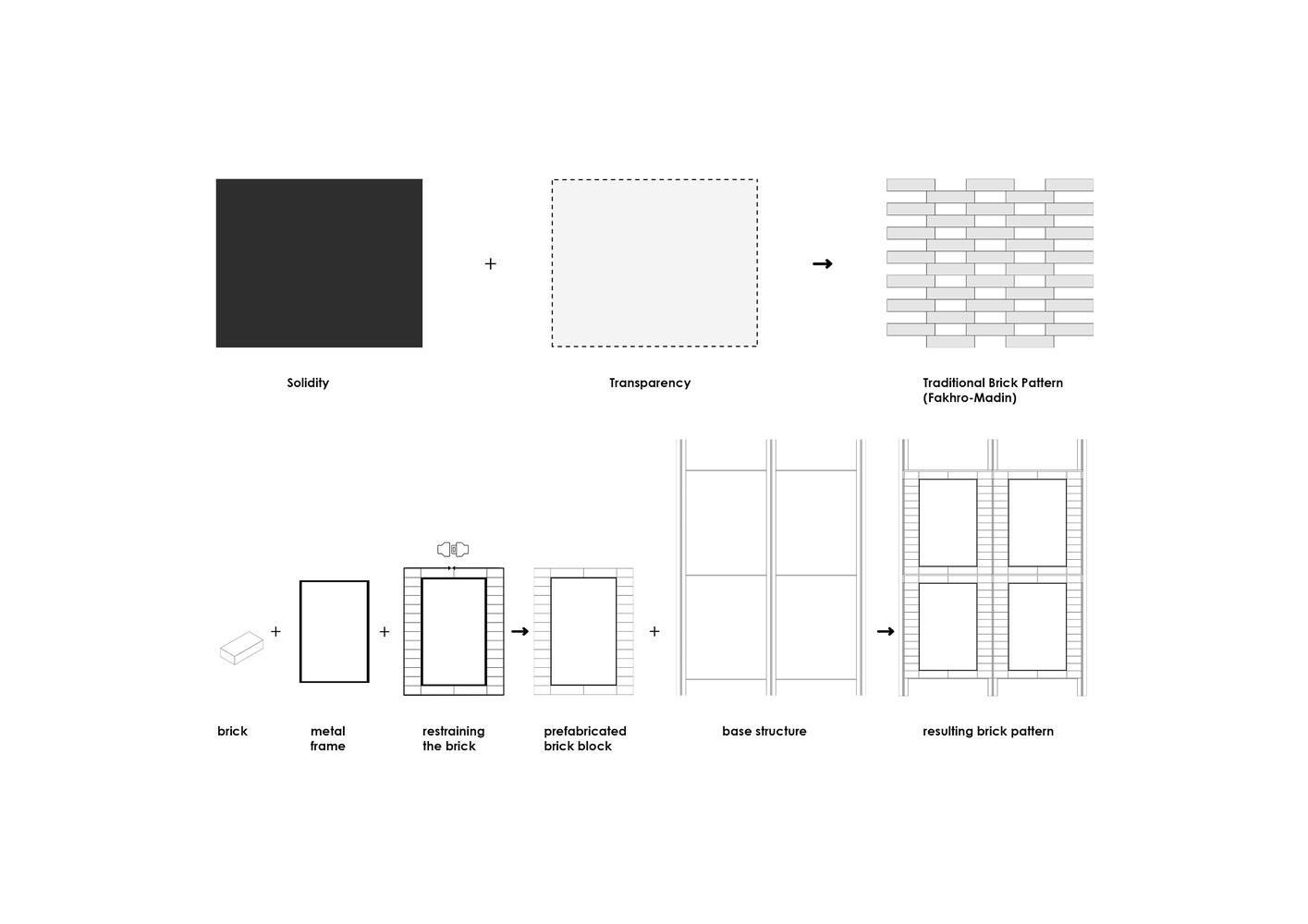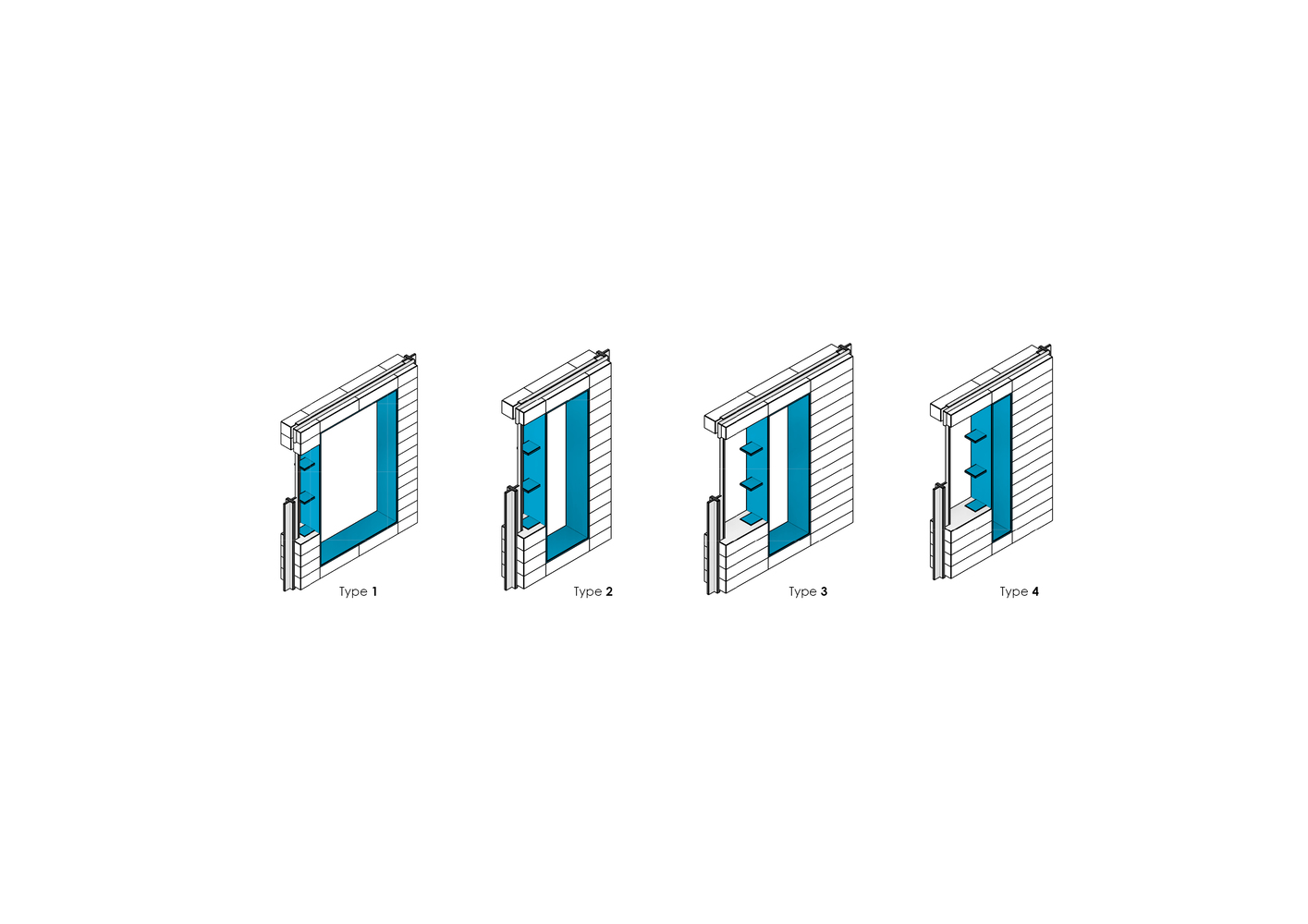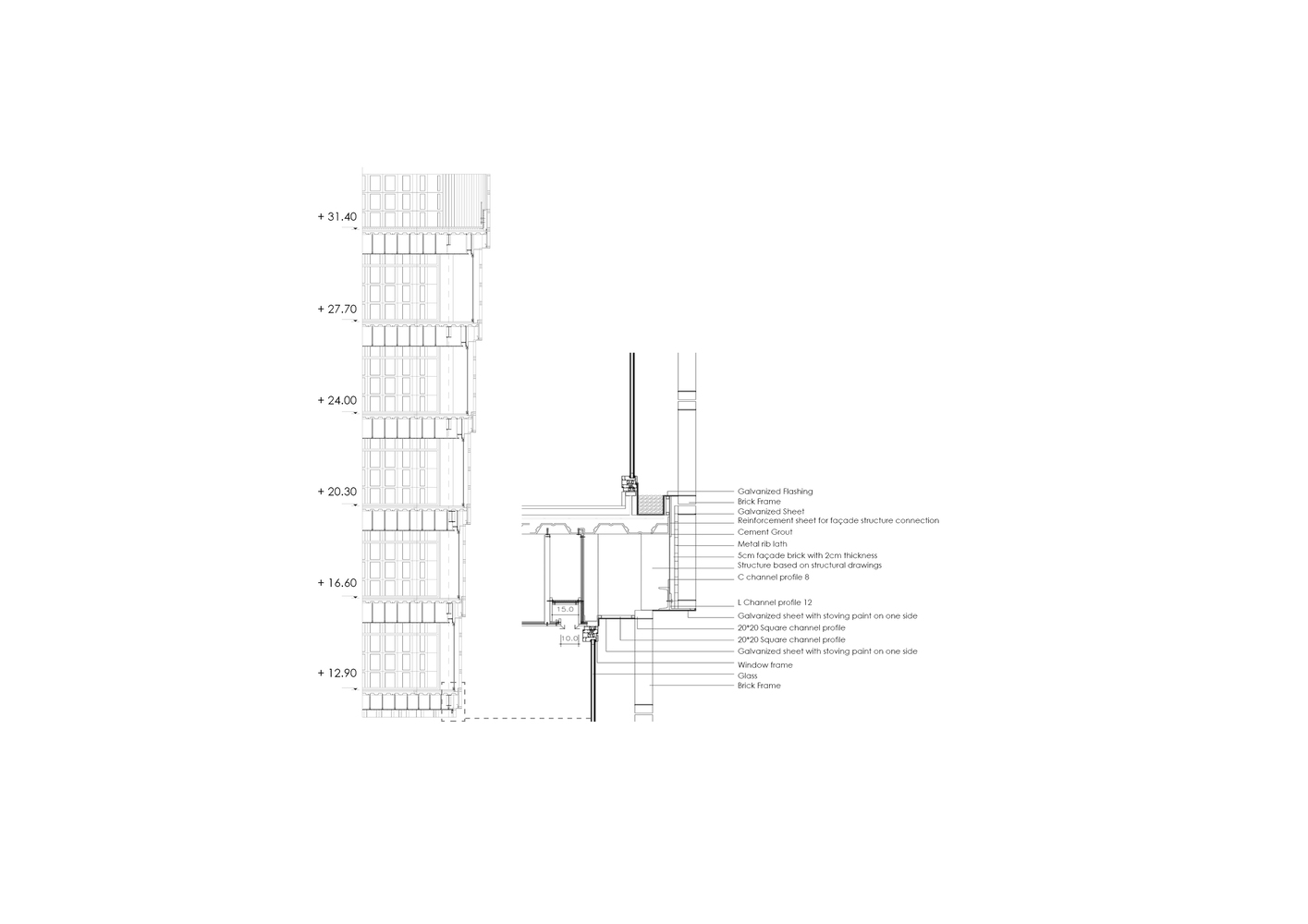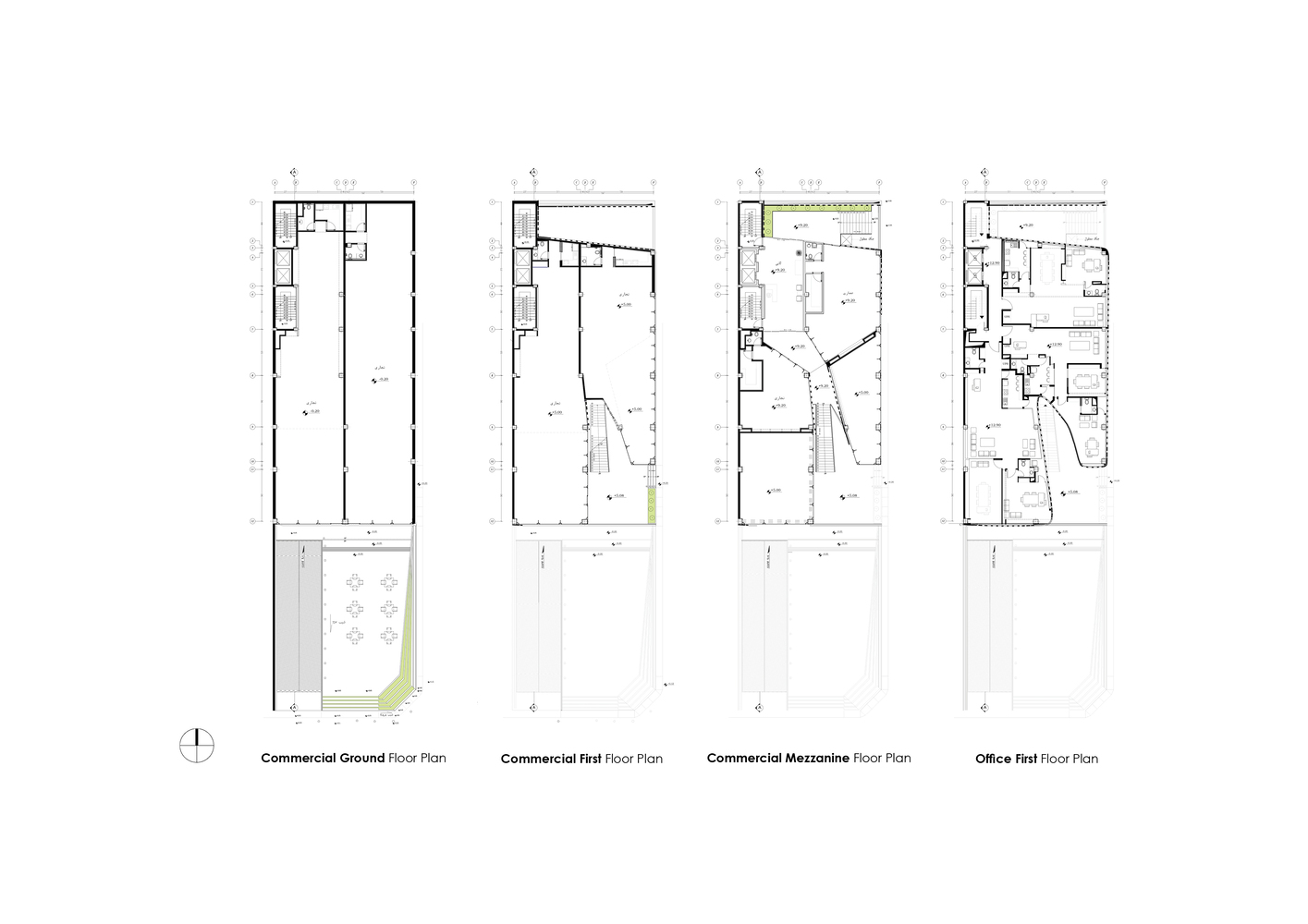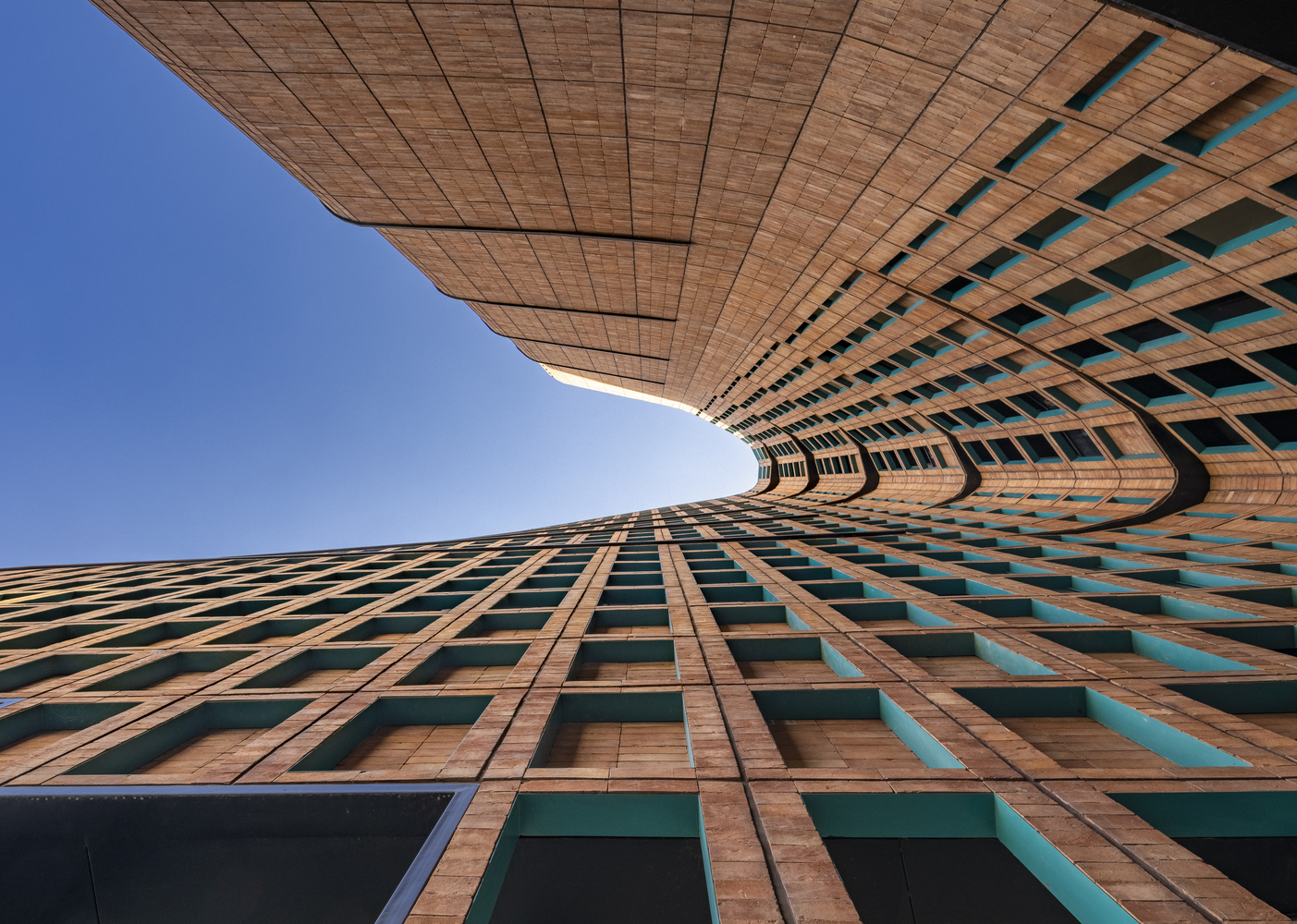
Hitra Office & Commercial Building / Hooba Design
Architecture studio Hooba Design Group, along with architect Hooman Balazadeh, have recently completed a brick-clad office building in Tehran, with a scooped-out central void to allow natural light to flow into the building.
Building as a single element of the city has an inevitable influence on its urban surrounding. During the design process, it is crucial to consider this mutual effect to create a win-win relationship between the building and the city. In this project, however, the form was the key to realizing the essence of the project. Here, the formal elements were used in both the overall entity and the individual parts.
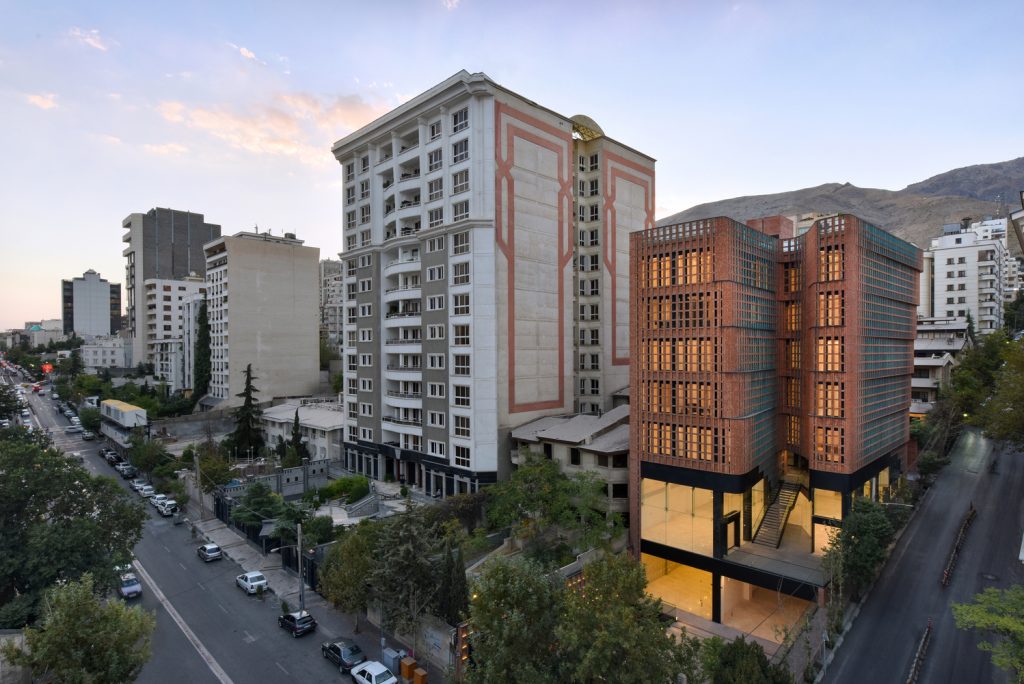
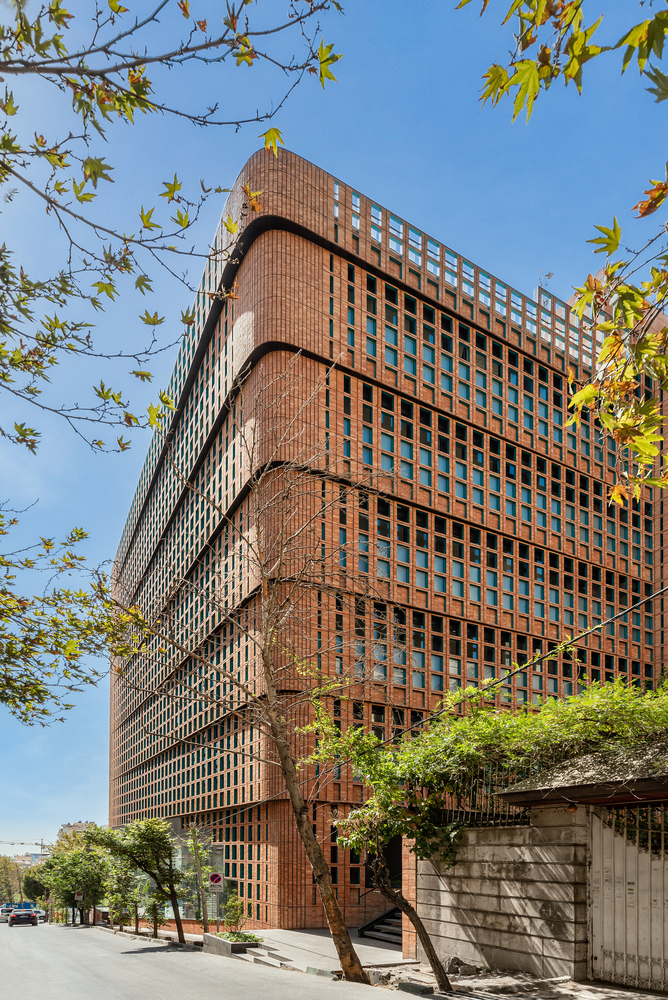
© Khatereh Eshghi 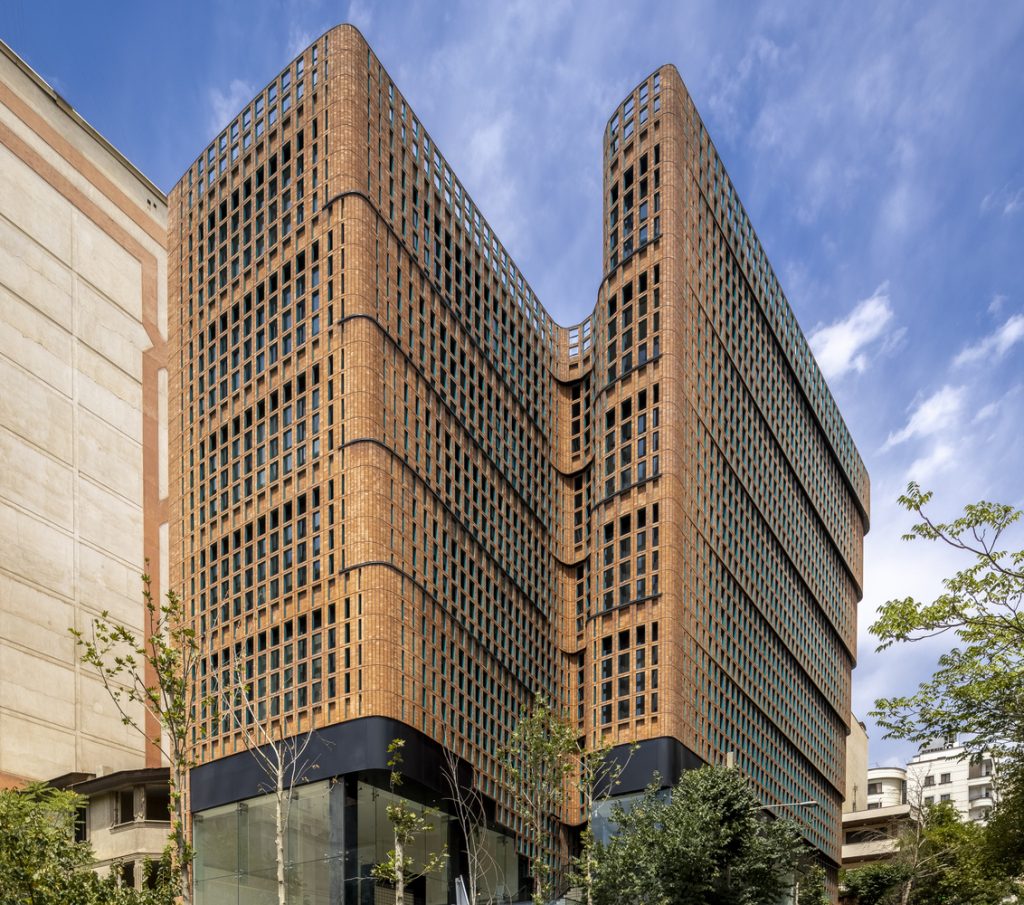
© Parham Taghioff
Hitra Commercial-Office Building is located at the sloped intersection of two main streets in the Velenjak neighborhood of Tehran. There is a 15% elevation difference throughout the site of this project. Above ground floors of the building are dedicated to office units. The commercial zone and the entrances were arranged to create outdoor green patios for people to relax. These platforms are aligned with street levels on both sides of the building to create an urban plaza for the public.
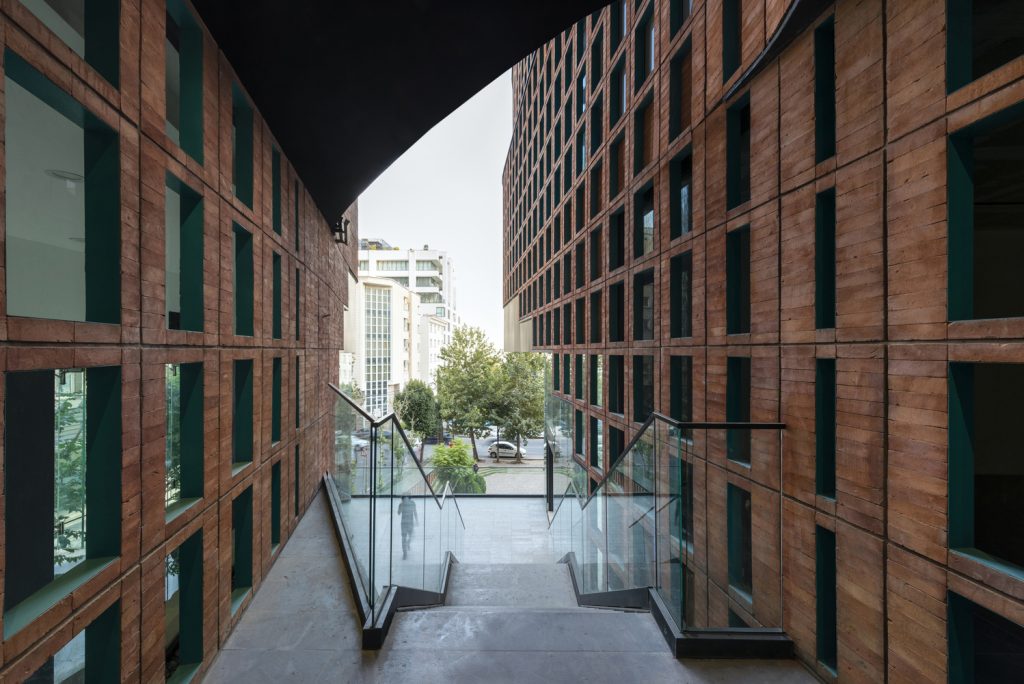
Opposing the common urban development in the city, where most buildings are designed based on personal benefits, this project tries to create a win-win opportunity for both the commercial units and the city by creating a public space for the neighborhood which is highly needed in a city like Tehran. These small public platforms transform Teheran neighborhoods into more dynamic spaces in which commercial zones have more connection to the surrounding urban areas.
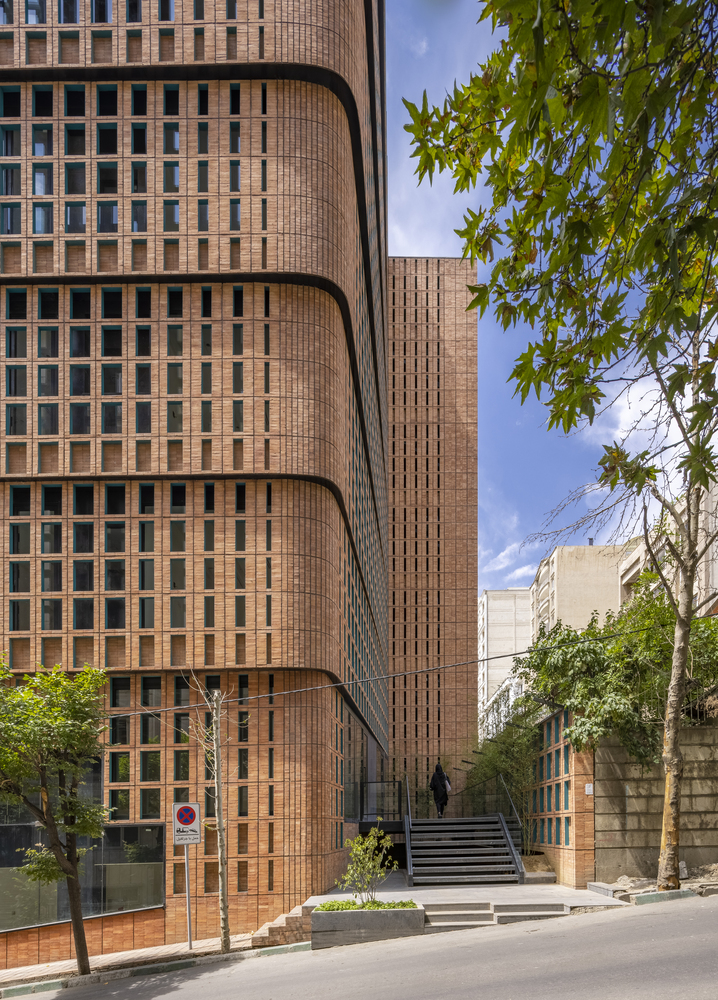
The main criteria of this project were to reevaluate the morphology of a typical office building to improve the quality of natural lighting and view without altering the optimum built area of the building. The standard regulation for office buildings in Tehran indicates that the occupation area of the building should not exceed 60% of the land area + 2m. Following this rule, usually, a portion of the land area would be used as a central light well, to provide light to the central units. Moreover, the allowable proportion of glass to other materials used on the façade is 40%.
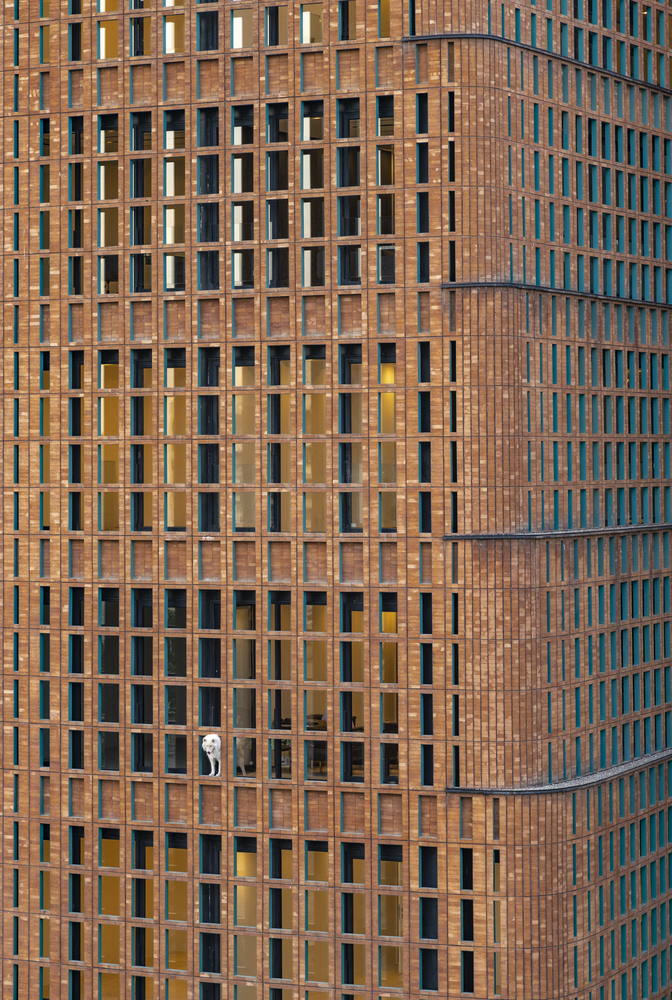
© Parham Taghioff 
© Parham Taghioff
These two regulations were reassessed during the preliminary investigations of this project in order to optimize natural lighting and view. Another criterion was to create an integrated system for the commercial and office zones. The primary volume of the project was formed by relocating the interior void to the surface. This void not only forms the main entrance but also provides light and a view to the central units. This new morphology increases the surface area of the building in contact with the city and connects people to the office zone through the created welcoming entrance.
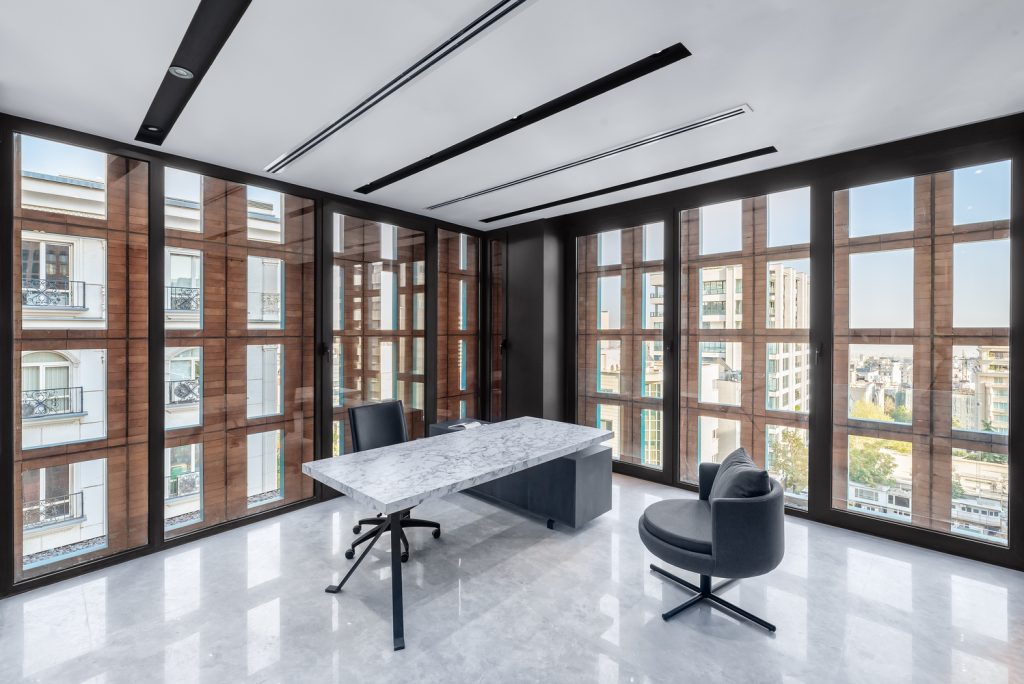

Following the existing slope of the site, the commercial zone of the project was formed in three levels. There are two entrances (North and South) to the office section both of which are connected to the administrative lobby of the complex.

An integrated double-skin façade was created with the outer porous skin formed by brick and torques metal frames. The combination of brick and metal frames formed modules that enable bigger openings on the façade. Based on this idea, a homogeneous mass was formed which creates a varying combination of brick and turquoise colors for the viewers based on their location and viewing angle. The size of the frames varies based on their location on the façade. Moreover, the continuous glass windows on the inner layer of the double-skin allow for proper sunlight penetration to the office units, reducing the electricity consumption throughout the building.
